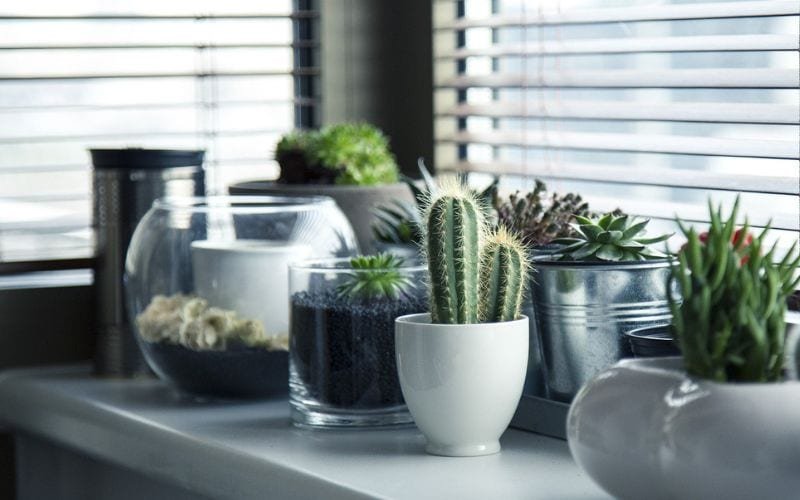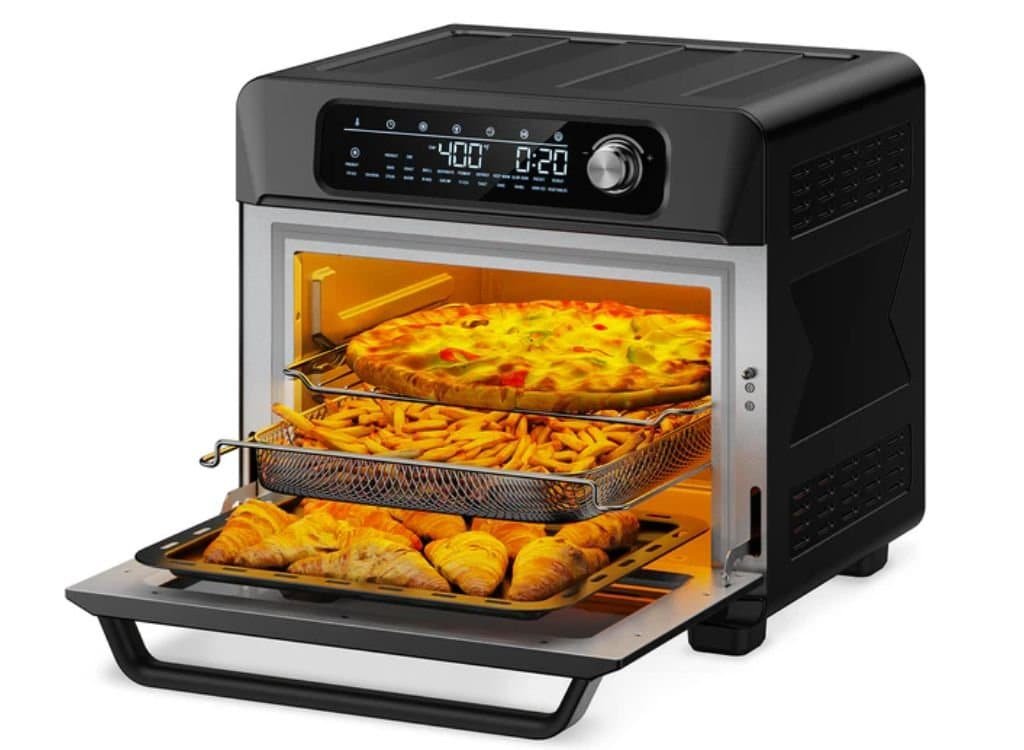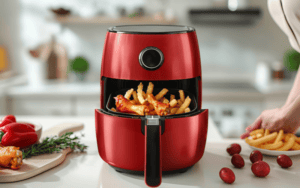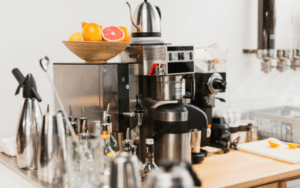When you think of a kitchen essential that can handle anything from crispy fried eggs to a slow-cooked roast, cast iron cookware is likely to come to mind. Cast iron has been around for centuries; it’s one of the most reliable, versatile, and durable types of cookware you can own. Whether you’re an aspiring home chef or just someone who loves the smell of pancakes sizzling on a Sunday morning, cast iron cookware can seriously level up your cooking game. But how to choose cast iron cookware? There are plenty of poor-quality rip-offs out there, this article will outline the key indicators of a good cast iron utensil, so you can buy one that lasts you a lifetime.
So, how to choose cast iron cookware for your lifestyle? That’s exactly what we’re going to dive into today. We’ll guide you through every step, so that by the end, you’ll feel confident enough to add that perfect skillet, Dutch oven, or griddle to your cart. Let’s get cooking!
Why Cast Iron Cookware is So Popular?

Before we jump into the specifics, let’s take a moment to appreciate why cast iron cookware is still a kitchen must-have. Cast iron is revered for its ability to retain heat and distribute it evenly. That’s why your grandma’s fried chicken always had the perfect golden-brown crisp—it wasn’t magic; it was her trusty cast iron skillet.
One of the reasons is durability. Cast iron cookware is tough. With proper care, it lasts forever—seriously, some people are still using pans handed down from their great-grandparents! And the versatility? Well, you can sear a steak, bake a cornbread, roast a chicken, and even pop it in the oven for some cozy casseroles. Plus, it works on almost any heat source, including gas, electric, and induction stoves, as well as campfires.
Step-by-Step Guide to Choosing the Best Cast Iron Cookware
Step 1: Assess Your Cooking Needs
The first step in finding the right cast iron cookware is asking yourself: What do I cook most often? Your choice of cookware will depend on your favorite dishes and cooking styles.
Do you love frying?
Then a cast iron skillet is your go-to. Skillets are incredibly versatile—perfect for frying, searing, or even baking a pie. For example, a 10-12 inch skillet will handle everyday meals like scrambled eggs, burgers, or sautéed veggies.
Prefer slow-cooked stews and roasts?
A Dutch oven is the kitchen hero you need. Dutch ovens are heavy-duty and can handle soups, stews, roasts, and even bread baking. They’re great for one-pot meals where you want flavors to slowly mingle.
For the grill master or pancake enthusiast, consider a griddle. Griddles are fantastic for grilling meats, making sandwiches, or cooking big breakfasts.
Step 2: Consider the Size and Weight of Cookware
Size matters—especially in the kitchen! Cast iron cookware comes in a variety of sizes and weights, and the right one depends on how many people you’re cooking for your stove size, and your storage space.
- Small Skillets (8 inches): Ideal for one or two-person meals or side dishes. Easy to handle and store.
- Medium Skillets (10-12 inches): This is the sweet spot for most households. Big enough for family meals but not so heavy that you’ll dread lifting it.
- Large Skillets or Dutch Ovens (13+ inches or 7+ quarts): Perfect for large families or anyone who loves hosting dinner parties. Be prepared—these can be hefty!
- Weight: Cast iron is notoriously heavy, and while this is great for heat retention, it can make it hard to handle. A medium skillet (10-12 inches) typically weighs around 5-8 pounds.
Step 3: Choose Between Bare vs. Enameled Cast Iron
Here’s where things get interesting: bare vs. enameled cast iron. Both are excellent, but they offer slightly different benefits depending on your needs.
Bare Cast Iron:
This is the traditional, rugged version you’ve probably seen. It’s cheaper and requires seasoning to maintain its non-stick surface. Bare cast iron is perfect for high-heat cooking like grilling and searing. If you don’t mind a little extra maintenance, this might be perfect for you.
Enameled Cast Iron:
This comes with a smooth coating that eliminates the need for seasoning and is easier to clean. It’s also rust-resistant. However, enameled cast iron tends to be pricier. It’s a great option for someone who wants low-maintenance cookware that looks as good on the table as it performs on the stove.
Step 4: Decide on Pre-Seasoned vs. Unseasoned
Seasoning is what gives cast iron its non-stick power. Some cast iron cookware comes pre-seasoned from the manufacturer, which means it’s ready to use right out of the box. Pre-seasoned cookware is perfect if you’re new to cast iron or just want to skip the seasoning process.
Unseasoned cookware, on the other hand, requires you to season it before use. This can be a fun DIY project if you want to create a custom non-stick surface, but it does take time and effort. If you love the idea of breaking in your pan and making it your own, unseasoned might be for you.
It’s important to note that regardless of whether your cookware is pre-seasoned or not, all cast iron needs to be seasoned from time to time to maintain its non-stick qualities and prevent rust. So, think of seasoning as an ongoing relationship—your cast iron will thank you for it!
Step 5: Evaluate Handle Design and Usability
If you’ve ever lifted a fully loaded Dutch oven, you’ll know that the handle’s design matters. Look for cookware with helper handles or loop handles, especially for larger pieces. These extra grips make it easier to move your pan from stove to oven or around the kitchen.
Test out the ergonomics of the handle if you can. A comfortable, sturdy grip can make all the difference, especially when you’re dealing with heavy cast iron.
Step 6: Check Compatibility with Your Stove Type
While cast iron is incredibly versatile, not all pieces are compatible with every heat source. Make sure your cookware works with your stove. Most cast iron is fine for gas and electric stoves, but if you have an induction stove, double-check that your cookware is induction-compatible. (Hint: Bare cast iron usually works great with induction, but enameled varieties sometimes don’t.)
Best Cast Iron Cookwares in the Market
1. Cast Iron Dutch Oven with Lid
This 6-quart Cast Iron Dutch Oven with a Lid is perfect for everything from slow-cooked stews to freshly baked bread. Whether you’re simmering soups, roasting veggies, or crafting the perfect pot roast, this heavy-duty pot will handle it all like a pro.
Made with durable cast iron, it heats evenly, so your food cooks perfectly every time. Plus, it holds heat for longer, keeping your meal warm even after you’ve turned off the stove. The tight-fitting lid locks in moisture, making sure your dishes come out tender and juicy.
And guess what? It’s pre-seasoned, which means it’s ready to use right out of the box—no fuss! Use it on the stove, in the oven, or even over a campfire. Talk about versatility!
2. MegaChef Cast Iron Cookware Set
The Megachef cookware set is like having a superhero team for your stove, ready to tackle any recipe with ease!
Why You’ll Love It:
First off, this set comes with everything you need. It includes a versatile skillet, a handy griddle, and a robust Dutch oven. Another fantastic feature is that these pieces come pre-seasoned and ready to use right out of the box. No need to spend hours seasoning your cookware—just unbox and start cooking!
With proper care, these pieces will become family heirlooms, passed down from generation to generation. They are tough, resilient, and always ready for action, ensuring that your investment in quality cookware pays off over time.
Inside the set, you’ll find a 10.25-inch skillet, perfect for frying, sautéing, and baking. It’s ideal for everything from eggs to cornbread. There’s also a 12-inch griddle, great for making pancakes, grilling sandwiches, and more. Its large surface area is perfect for cooking up a big breakfast or dinner. Finally, the 6-quart Dutch oven is the star of your kitchen. It’s perfect for slow-cooked stews, braises, and even baking bread.
Picture this: It’s Sunday morning, and you’re preparing a big brunch. The skillet is sizzling with bacon, the griddle is lined with golden pancakes, and the Dutch oven is bubbling with a soup stew that’s been cooking all night. With the MegaChef cast iron set, you’ll have all the tools you need to create meals that are not only delicious but also full of love.
How to Care for Your Cast Iron Cookware?

Taking care of cast iron cookware may seem intimidating at first, but it’s pretty simple! Follow these tips to keep your cookware in tip-top shape for years to come.
Seasoning Basics
Seasoning your cast iron maintains its natural non-stick surface and prevents rust. It’s basically a process of baking a thin layer of oil onto the cookware. Here’s a quick and easy way to do it:
- Clean your cookware thoroughly with warm water (no soap!).
- Dry it completely (use heat to make sure there’s no water left).
- Rub a small amount of vegetable oil over the entire surface, inside and out.
- Place it upside down in the oven at 400°F for about an hour.
- Let it cool, and voilà—your cast iron is ready!
Quick Tip: Always coat your cast iron with a thin layer of oil after cleaning to keep the seasoning intact.
Washing Basics
Keeping your cast iron clean is key to its longevity. Here’s how to wash it without damaging that precious seasoning:
- After cooking, let your pan cool slightly but don’t let it sit too long with food in it.
- Rinse with warm water and use a stiff brush or scraper to remove stuck-on bits—skip the soap!
- If needed, you can use coarse salt as a gentle abrasive for tougher messes.
- Dry it immediately to prevent rusting, and remember to add a light coat of oil afterward.
Cooking Basics
Cooking with cast iron is both an art and a science! Here are some tips to make the most of your cast iron cookware:
- Preheat Your Pan: Always preheat your cast iron pan before adding food. This helps achieve that beautiful sear and prevents sticking.
- Use the Right Utensils: Opt for wooden or silicone utensils to avoid scratching the surface. Metal tools can be used but be cautious.
- Avoid Acidic Foods: Cooking highly acidic foods (like tomatoes) in unseasoned cast iron can strip the seasoning. If you must, limit the cooking time.
- Store Properly: To avoid moisture buildup, store your cast iron cookware in a dry place. If stacking, place a paper towel between pans to absorb any moisture.
With these simple care tips, your cast iron cookware will remain a reliable kitchen companion for years to come!
Conclusion
So there you have it—your ultimate guide to choosing the best cast iron cookware for your kitchen! Just like picking the right shoes for a dance-off, selecting the perfect piece of cast iron cookware can make a world of difference in your cooking adventures. Remember, it’s all about matching the cookware to your culinary needs and lifestyle.
So go ahead, explore those Amazon picks, choose your ideal cast iron companion, and get ready to cook up a storm.
























